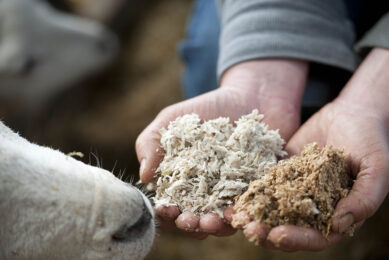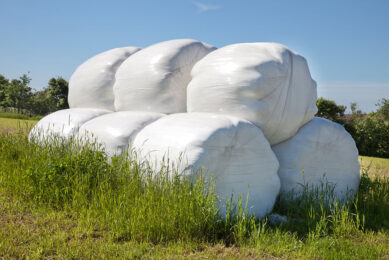Feed safety control in the whole feed chain
![Johan den Hartog: "Participation in GMP+ is triggered by market demand, but also in some cases by the free choice of market ( eaders". [Photo: Roel Dijkstra]](https://www.allaboutfeed.net/app/uploads/2020/12/001_134_rb-image-2760488.jpeg)
It is crucial that feed safety risks are controlled throughout the whole supply chain. Last year, agreements were made to harmonise several feed safety schemes. Johan den Hartog explains the role of GMP+ in achieving uniformity before the end of 2016.
Livestock production and the consumption of animal products are crucial to the economic and nutritional well-being of millions of people around the world. Animal feed plays a leading role in the food industry as the most important contributor to safe, abundant, and affordable animal proteins for a growing population. The role of animal feed in the production of safe food is recognised worldwide.
Lessons from the past
Due to the international character of the animal feed industry, the wide variety of macro and micro ingredients, and the sometimes long supply chains, it is crucial that feed safety risks are controlled throughout the whole supply chain. Back in the 90s, some hard, lessons were learnt by the GMP+ FSA (Feed Safety Assurance) certified companies. The cadmium in cadmium in di-calcium phosphate crisis in 1996, mad cow disease found in meat-and-bone meal between 1992 – 2000, dioxin found in Brazilian citrus pulp in 1998 and dioxin used in fats from Belgium in 1999 all incidents demonstrated that it is crucial to have a stable and controlled supply chain. These incidents led to the conclusions that safe feed can only be produced and delivered to a farmer when the whole feed supply chain is involved in feed safety assurance. As a result pro-active approach by means of HACCP is preferred instead of a re-active approach after the occurrence of safety emergencies.
The GMP+ Feed Certification scheme
In 1999 it was therefore decided to integrate HACCP into the GMP+ Feed Safety Assurance certification and to extend the scope of certification to the whole supply chain. These improvements were implemented between 2000 and 2003. These substantial adjustments were based on the principle that every entrepreneur in the feed chain is responsible for the safety of the feed products put on the market and for the services offered. Many companies underline this approach, as evidenced by the large and still growing participation. Today, over 14,700 companies / locations are GMP+ FSA certified, located in over 75 countries in Europe, North and South America and Asia. Participation is triggered by market demand, but also in some cases by the free choice of market leaders for GMP+ FSA because of added value of the feed safety control in the feed supply chain.
3 pillars of FSA
An additional advantage of the chain approach is uniformity regarding the principles of feed safety control in the whole feed chain. The principles, laid down in all GMP+ FSA standards are: a sound prerequisite programme, a detailed and exhaustive hazard plan and a supporting management system. These three pillars are the base of a complete management system for assuring feed safety. Specific requirements for suppliers are designed to create a feed supply chain where all involved companies assure the safety of the feed in all stages of production and distribution in the same way. With a GMP+ FSA certificate, they can demonstrate they meet the highest standards for feed safety.
Third party certification
On top of that, all GMP+ FSA certified companies in the whole feed chain are certified (third party certification) by a uniform and consistent set of rules for certification. And this certification process is assessed in a consistent way via accreditation and via compliance assessments by GMP+ International. The international coverage of GMP+ Feed Safety Assurance enables to act properly.
This is in the interest of all links in the feed chain, as well as the livestock and aqua farmers, and the following links in the food production chain. In this way, a level playing field is created on a rather high level of control internationally.
Figure 3 – Role of GMP in the feed and food chain.
Harmonisation of schemes
There are several feed safety assurance certification schemes. Several scheme holders have a mutual recognition agreement in order to enable companies, participating in different certifications schemes, can trade in a proper way. The practise shows that, even small, differences about purchase requirements in the several certification schemes can result in confusion and sometimes (ab)use in the market.
In June 2015, GMP+ International reached with three other leading feed safety assurance scheme holders (AIC, Ovocom, QS) an agreement to harmonise the requirements for purchase of feed ingredients and services. Leading principle is that every company in the supply chain should assure the feed safety by applying the best practises and demonstrate this via third party certification.
The aim is to create uniformity, to improve transparency and to avoid (ab)use of the current differences. The target is to achieve this uniformity before the end of 2016. The result should be a better control of the feed safety in the whole feed chain.
Join 26,000+ subscribers
Subscribe to our newsletter to stay updated about all the need-to-know content in the feed sector, three times a week. Beheer
Beheer










 WP Admin
WP Admin  Bewerk bericht
Bewerk bericht